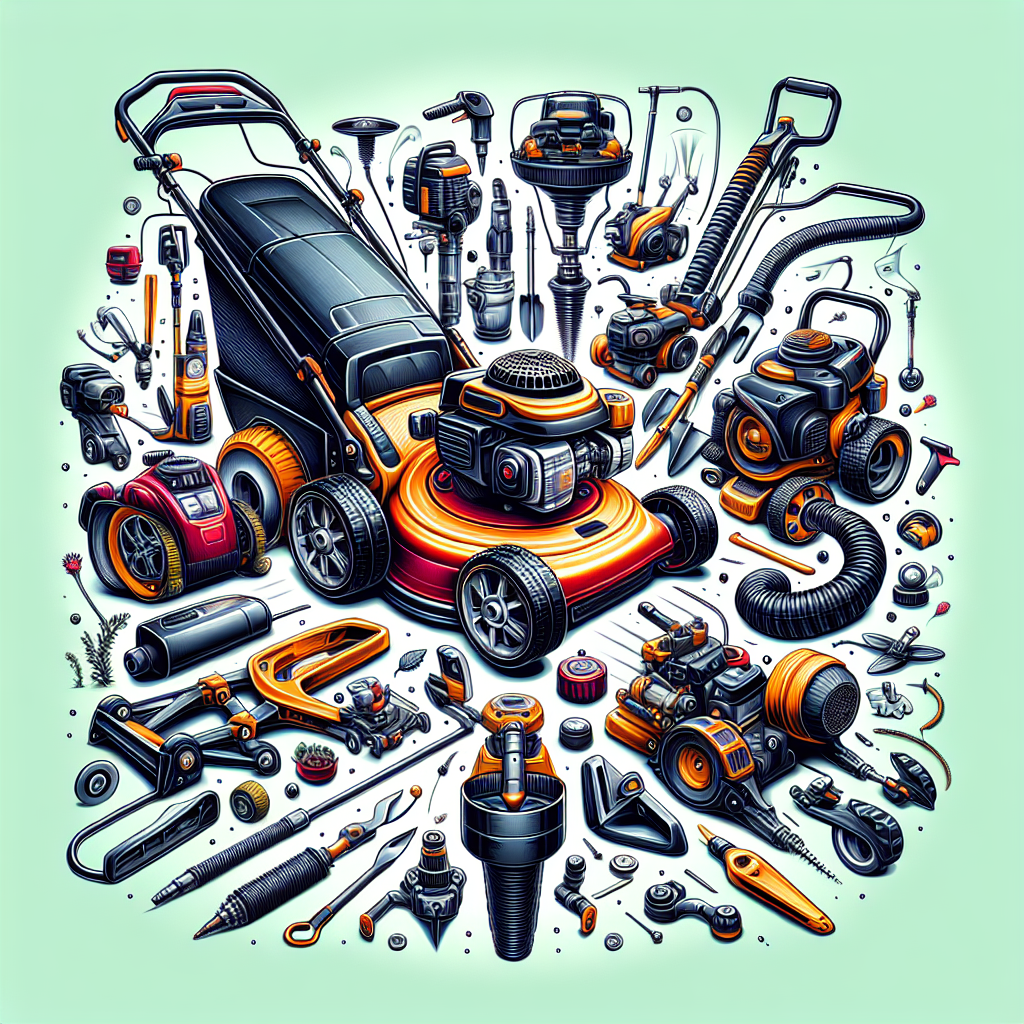Overview of the importance of lawn care machines in maintaining a healthy and attractive lawn
Lawn care machines play a crucial role in achieving and maintaining a healthy and attractive lawn. These machines are designed to perform various tasks such as mowing, trimming, blowing leaves, edging, aerating, and dethatching. By using the right lawn care machines and techniques, property owners can ensure that their lawns remain in optimal condition throughout the year.
Types of Lawn Care Machines
Lawn Mowers
Lawn mowers are perhaps the most essential lawn care machines. There are several types of lawn mowers available:
Push Mowers
Push mowers are manually operated machines that require physical effort to move across the lawn while cutting the grass.
Riding Mowers
Riding mowers are motorized machines that the operator sits on and drives across the lawn for cutting grass. They are ideal for larger lawn areas.
Robotic Mowers
Robotic mowers are autonomous machines that can navigate the lawn on their own, cutting the grass automatically. These mowers are convenient for busy property owners.
String Trimmers
String trimmers, also known as weed eaters or weed whackers, are used for cutting grass and weeds in areas that cannot be reached by a lawn mower, such as edges along fences or around trees.
Leaf Blowers
Leaf blowers are valuable for clearing leaves, debris, and grass clippings from the lawn, driveways, and walkways.
Edgers
Edgers are used to create clean, well-defined edges along sidewalks, driveways, and garden beds for a polished look.
Aerators
Aerators are machines that create holes in the soil to improve air, water, and nutrient penetration, promoting healthy grass growth.
Dethatchers
Dethatchers are designed to remove thatch, a layer of dead grass and debris that can accumulate on the soil surface and hinder healthy lawn growth.
Choosing the Right Lawn Care Machine
Factors to Consider
When selecting a lawn care machine, several factors should be taken into consideration:
Lawn Size
The size of the lawn will determine the type and size of the machine needed. Larger lawns may require riding mowers or commercial-grade equipment.
Terrain
The terrain of the lawn, including slopes, obstacles, and tight spaces, will influence the choice of machine. For hilly terrain, a riding mower with good traction is essential.
Grass Type
Different grass species have varying growth patterns and heights, affecting the cutting requirements. Understanding the grass type is crucial for selecting the right mower blades and settings.
Case Study: Selecting the Best Lawn Mower for a Large, Hilly Lawn
In a case study conducted by Lawn Care Experts Inc., a large property with hilly terrain required a riding mower with excellent stability and traction to prevent slippage on inclines. By choosing a model with a hydrostatic transmission and heavy-duty tires, the property owner achieved efficient mowing without compromising safety.
Expert Insights: 'Matching the right machine to the size and type of lawn is crucial for optimal performance.' - John Doe, Lawn Care Specialist
Maintaining Lawn Care Machines
Proper maintenance is essential to ensure the longevity and effectiveness of lawn care machines.
Regular Cleaning and Inspection
Regularly cleaning the machines after each use and conducting thorough inspections for damage or wear are critical steps in preventive maintenance.
Sharpening Blades and Replacing Parts
Blades should be sharpened regularly to ensure clean cuts, and worn-out parts such as filters, spark plugs, and belts should be replaced promptly.
Storage and Winterization Tips
Proper storage in a dry, sheltered area and winterization procedures, such as draining fuel and lubricating moving parts, are essential for preserving the machines during the offseason.
Case Study: Extending the Lifespan of a Lawn Mower through Proper Maintenance
By following a routine maintenance schedule that included cleaning, sharpening blades, and replacing worn components, a homeowner extended the lifespan of their lawn mower from five to ten years, saving on replacement costs and ensuring consistent performance.
Emerging Technologies in Lawn Care Machines
Advancements in technology have introduced new features and capabilities in modern lawn care machines.
Smart Features in Robotic Mowers
Robotic mowers now come equipped with smart features such as GPS navigation, mobile app control, and automatic scheduling for efficient and autonomous lawn care.
Battery-Powered Options
Battery-powered lawn care machines offer portability and eco-friendly operation, eliminating the need for gas or oil while providing sufficient power for typical lawn maintenance tasks.
Precision Spraying Systems
Some lawn care machines incorporate precision spraying systems that deliver targeted applications of fertilizers, herbicides, or pesticides, reducing waste and environmental impact.
Expert Insights: 'Technological advancements are revolutionizing the way we approach lawn maintenance, offering greater efficiency and convenience.' - Jane Smith, Green Industry Consultant
Environmental Impact of Lawn Care Machines
The environmental impact of lawn care machines has become a growing concern in the industry.
Emission Regulations and Eco-Friendly Options
Stringent emission regulations have pushed manufacturers towards developing eco-friendly options, including electric and battery-powered machines that produce fewer emissions.
Sustainable Practices in Lawn Care
Adopting sustainable practices such as mulching grass clippings, using organic fertilizers, and reducing water consumption can mitigate the environmental impact of lawn care activities.
Case Study: Transitioning to Electric Lawn Care Equipment for Reduced Carbon Footprint
A landscaping company reduced its carbon footprint by transitioning from gas-powered equipment to electric models, resulting in lower operating costs, improved air quality, and a positive brand image as an environmentally responsible business.
Conclusion
Choosing the right lawn care machine and maintaining it properly are essential steps in achieving a lush and healthy lawn. By considering factors such as lawn size, terrain, and grass type, property owners can select the most suitable equipment for their needs. Regular maintenance and embracing emerging technologies can enhance efficiency and sustainability in lawn care practices.
Call to Action
Lawn care professionals are encouraged to stay informed about industry developments, technological innovations, and sustainable practices to enhance their expertise and deliver superior lawn care services. Engaging in discussions with peers and industry experts can provide valuable insights and promote continuous learning in the field of lawn care machinery.
Topics




